

 Freemasonry in Israel
Freemasonry in Israel


 Freemasonry in Israel
Freemasonry in Israel

The Origin and Fate of the Temples at Jerusalem
Philip E.H. Thomas
Appendices
A. THE NEW CHRONOLOGY OF EGYPT (Rohl 1995)
Note: 'The New Chronology of Egypt' by Rohl (1995), lowering conventional dates up to 350 years, has not been accepted in academic Egyptology.
• Bennett, Chris, "Temporal Fugues," Journal of Ancient and Medieval Studies, XIII, 1996.
• "New Chronology." Wikipedia, The Free Encyclopedia. 2010. Wikimedia Foundation, Inc. <http://en.wikipedia.org/wiki/New_Chronology_%28Rohl%29>.
• "Kenneth Anderson Kitchen." Wikipedia, The Free Encyclopedia. 2010. Wikimedia Foundation, Inc. <http://en.wikipedia.org/wiki/Kenneth_Kitchen>.
A1. THE BASIS OF ITS ESTABLISHMENT
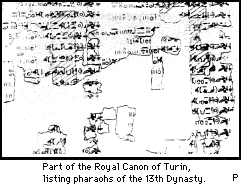
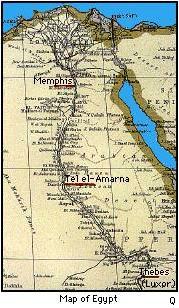
In the Egyptian Museum at Turin, there exists a papyrus document which was composed in the early 19th. Dynasty. Although badly deteriorated, it nevertheless lists in some detail, amongst other things, all known pharaohs from the 1st. Dynasty (c. 2920 NC) up to those of the 18th. Dynasty (1194-952 NC). Allowing for partial damage and deterioration over the years, each pharaoh is shown with his or her length of reign in years, months and days. It is known as 'The Royal Canon of Turin'.
Throughout the Middle East almost all records previous to this Canon were written on wet clay and then baked. In every instance such tablets were dated in relation to the lunar month and regnal year of the appropriate king; whether Egyptian, Babylonian or Assyrian. For example, in the 13th. Dynasty, Pharaoh Iayib reigned for 10 years 8 months 28 days, followed by Pharaoh Ay who reigned for 23 years 8 months 18 days. Obviously, the ancients did not have our advantage of relating events to the Common Era.
Hitherto, Egyptologists have been inclined to add together most, if not all, the reigning periods in order to obtain a time scale. It is only recently that there has come the realisation that many rulers functioned either as contemporaries of adjoining kingdoms or as co-regents of the same kingdom. Thus, the only completely reliable method of assessing the degree of such 'overlaps', has been to resort to astronomical dating, or rather retro-dating, that can be proven scientifically by modern standards.
For centuries the ancients regarded eclipses of the sun and positions of the planet Venus with special veneration. Mention of such events have been deciphered on tablets dug up in Egypt, the Levant and Syria. As a result, it has now been possible to establish three specific dates with total accuracy and confidence. These dates can be taken as the 'bench marks' of the New Chronology of the pharaohs.
The years in question are: 664 BCE; 1012 NC and 1540 NC. Very briefly, the methodology to achieve this has been as follows:
• 664 BCE
For a long time this datum has been accepted in ancient chronology. It is based upon the unalterable fact that King Ashurbanipal of Assyria invaded Egypt that year and sacked the city of Thebes (Luxor) as a penalty for the revolt led by King Taharka and which cost him his life. This episode has been inscribed upon contemporary monuments, as well as surviving accounts written at that time in Babylon, Greece and Rome. It also confirms the coronation of Pharaoh Psamtek I of the 26th. Dynasty.
The introduction of the two extra datum points has dramatically revised the scheduling of Biblical history for the previous 1000 years.
A2. THE NEW DATUM OF 1012 NC
• 1012 NC
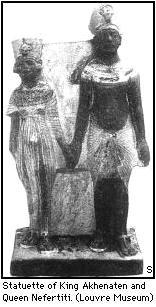
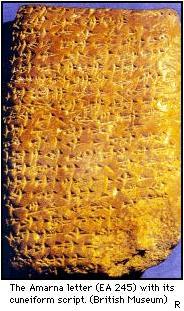
Hitherto, conventional chronology has placed the 18th. Dynasty in the time span of 1539-1295 BCE. The fifteen pharaohs forming this dynasty are well recorded and are not disputed. However, the historical relationship between the Egyptians and Israelites has had to be refined more accurately.
In CE 1887, a peasant woman of Tell el-Amarna, nowadays a small village on the Nile and midway between Cairo and Luxor, dug up 380 clay tablets from beneath the floor of a ruined mudbrick house. They subsequently transpired to be part of the contents of the 'House of Correspondence of Pharaoh'. The majority of these letters were either from notables of the Levant or Pharaoh's own file copies of replies. They also included letters to both Akhenaten and his Queen Nefertiti. It seems that all these letters were lost when the then city of El Amarna was abandoned (for whatever reason) early in the reign of Tutankhamun.

These letters also contained reports of military campaigns in Canaan, including David's raids and his seizure of Jerusalem. One vital document helped to pin-point the death of Amenhotep III in 1012 NC. It was from Abimilku, King of Tyre, commiserating upon the death of Amenhotep. It went on to describe a disastrous fire in the palace archives of King Nikmaddu II at Ugarit (about 120 miles (200 km) up the coast from Tyre). Subsequent archaeological digs beside the palace ruins found a blackened tablet which described the total eclipse of the sun at sunset in April/May of that year, and which was watched by Nikmaddu and his priests.
Total eclipses of the sun occur at the same place, on average, every 360 years. Only once in recorded history has this happened near sunset. Advanced computer technology (by M.I.T.) has been able to calculate the exact time as 6:09 pm on 9th. May 1012 NC, and 30 minutes before sunset. Clearly, therefore, Akhenaten must have succeeded Amenhotep that year. Consequently, it has been possible to bring forward the 18th. Dynasty's time span by as much as 345 years to 1194-952 NC.
A3. THE NEW DATUM OF 1540 NC
• 1540 NC
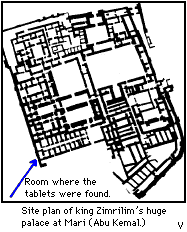

Tablets discovered at Nineveh (now Mosul, on the river Tigris in Northern Iraq), have been certified as copies from the reign of King Ammisaduga of the 1st. Dynasty of Babylon. Such records include the precise description of the risings and settings of the planet Venus. These observations are known to have coincided exactly with Ammisaduga's reign of 21 years. Use now had to be made of the Venus cycle; i.e. the period between exact repetitions of its risings and settings, and which average 60 years.
Old Babylonians dated their documents in relation to the days of the lunar month, beginning with the first crescent of the moon. The dating of these tablets, taken in conjunction with the specific positions of Venus, have been subjected to further advanced computer analysis in much the same way as described in the 1012 NC datum. The result has shown that Ammisaduga became king in 1419 NC and died in 1398 NC. Moving back from this, and knowing the names of all eleven kings of that dynasty, it has been possible to determine the reign of the 6th. and most famous (or infamous) of those kings, namely Hammurabi (1565-1522 NC). In his 35th. regnal year (1531 NC), Hammurabi attacked and destroyed the huge yet beautiful palace of Zimrilim, King of the city-state of Mari (now known as Abu Kemal, on the river Euphrates in eastern Syria). Zimrilim perished with it.
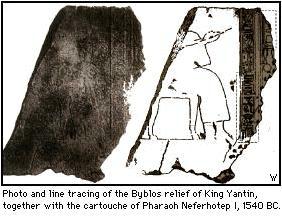
In CE 1933, a French archaeologist unearthed 25,000 tablets from the archive of that palace. The last date traced from those tablets showed that Zimrilim must have died in his 6th. regnal year, having reigned 1536-1531 NC. A particular tablet, however, was an inventory of gifts on the occasion of his enthronement, including a solid gold cup. It had come from Yantin, in his 9th. regnal year as King of the city-state of Byblos (now Yuniye, 13 miles (20 km) north of Beirut) and which, in those days, formed part of the Egyptian empire. Thus Yantin must have been enthroned in 1544 NC. Sadly, at this point, any archaeological hope of establishing an Egyptian connection went cold.
It is true to say that every archaeologist lives in the hope that perhaps once in a lifetime he or she may benefit from some dramatic and unexpected bonus, even indirectly, such as in the case of the Amarna woman's discovery. In CE 1952, there was just such an instance.
Arising from a comprehensive excavation of Byblos, a large limestone slab was uncovered with Egyptian hieroglyphics carved upon it. It showed Yantin in his 5th. year as King of Byblos. What was astonishing, however, was that beside Yantin's inscription was the partially damaged cartouche of Pharaoh Neferhotep in his first regnal year. It therefore followed that Neferhotep must have begun his reign in 1540 NC, thereby bringing forward the re-dating of the 13th. Dynasty by 127 years to 1632-1440 NC.
B. SELECTED BIBLICAL REFERENCES
'KJ' signifies reference to the King James Bible (Old Testament)
'GN', the Good News Bible (Old Testament)
'AP', the Apocrypha.
| 1 | Exodus 12:40 | KJ | The Sojourn. |
| 2 | Exodus 1:7-10 | KJ | Alarm at the increasing numbers of Israelites. |
| 3 | Exodus 7:17-12:30 | KJ | The ten plagues in Egypt. |
| 4 | Exodus 12:37 | GN | The reported exodus of 600,000 men. |
| 5 | Exodus 13:19 | KJ | Joseph's burial remains are removed. |
| 6 | Exodus 14:16 & 27 | KJ | Moses parts the Red Sea. |
| 7 | Exodus 32:15/35:29 | GN | The two stone Tablets. |
| 8 | Baruch 2:28 | AP | Writing the Ten Commandments. |
| 9 | Exodus 25:10-16 | KJ | The construction of the Ark. |
| 10 | I Samuel 4:4-11 | KJ | The Ark is lost in battle. |
| 11 | I Samuel 7:2 | GN | The Ark is recovered. |
| 12 | I Chronicles 21:5-14 | GN | David's first census. |
| 13 | II Samuel 24:18-24 | KJ | David buys Mount Moriah. |
| 14 | I Kings 1:34 & 39 | KJ | Solomon is anointed King. |
| 15 | I Chronicles 28:19 | GN | Solomon's undertaking to his father David. |
| 16 | II Chronicles 9:13-14 | GN | Solomon's annual income. |
| 17 | I Kings 6:37-38 | KJ | Time taken to build the First Temple. |
| 18 | Genesis 50:2-28 | KJ | The Twelve Tribes of Israel. |
| 19 | I Kings 5:8-11 | KJ | Hiram, King of Tyre, supplies Solomon. |
| 20 | I Kings 5:13-16 | KJ | Adoniram oversees the labour force. |
| 21 | I Kings 7:36 | KJ | Layout of the Temple walls. |
| 22 | I Kings 7:13-14 | GN | Hiram Abif invited to embellish the First Temple. |
| 23 | I Kings 7:23-26 | KJ | Constructing the Molten Sea. |
| 24 | I Kings 7:47 | KJ | The various precious metals used are unrecorded. |
| 25 | II Chronicles 7:5 | KJ | Sacrifice at the dedication |
| 26 | II Chronicles 9:1-6 | GN | Queen of Sheba visits Jerusalem. |
| 27 | II Chronicles 10:12 | GN | Solomon's Kingdom divided. |
| 28 | II Chronicles 12:2-9 | KJ | Ramesses II loots the Temple. |
| 29 | II Maccabees 2:4-7 | AP | Jeremiah hides the Ark. |
| 30 | II Kings 25:8-17 | KJ | First Temple is destroyed. |
| 31 | Jeremiah 52:31-34 | GN | Jehoiachin is released. |
| 32 | Ezra 1:1-3 | GN | The exiled Jews are freed to return to Jerusalem. |
| 33 | Ezra 6:5 | KJ | The First Temple's treasures restored. |
| 34 | Ezra 6:15 | GN | The Second Temple is dedicated. |
| 35 | Baruch 2:34-35 | AP | G-d pledges Israel to the Jews. |
C. MAIN LINE RULERS OF EGYPT
(EMPLOYING THE NEW CHRONOLOGY) (Rohl 1995)
Note: 'The New Chronology of Egypt' by Rohl (1995), lowering conventional dates up to 350 years, has not been accepted in academic Egyptology.
• Bennett, Chris, "Temporal Fugues," Journal of Ancient and Medieval Studies, XIII, 1996.
• "New Chronology." Wikipedia, The Free Encyclopedia. 2010. Wikimedia Foundation, Inc. <http://en.wikipedia.org/wiki/New_Chronology_%28Rohl%29>.
• "Kenneth Anderson Kitchen." Wikipedia, The Free Encyclopedia. 2010. Wikimedia Foundation, Inc. <http://en.wikipedia.org/wiki/Kenneth_Kitchen>.
SHOWING ONLY THOSE DYNASTIES AFFECTING THE ISRAELITES
Note: From time to time, there were many minor pharaohs or local kings, particularly during the Intermediate Periods. They have been deliberately excluded to avoid complication. Ruling Queens are annotated (Q).
|
Middle Kingdom Period |
Middle Bronze Age | ||
| 12th. Dynasty | |||
| Span = 1813-1663 | Formerly 1937-1759 (Old Chronology); i.e. a revision forwards of 124 years. | ||
| 1813-1786 | Amenemhat I | ||
| 1786-1741 | Senuseret I | ||
| 1741-1731 | Amenemhat II | ||
| 1731-1712 | Senuseret II | ||
| 1712-1682 | Senuseret III | 1683: Joseph kidnapped. | |
| 1682-1636 | Amenemhat III | 1670: Joseph made Vizier to Egypt. | |
| 1662: Jews arrive. | |||
| 1653-1645 | Amenemhat IV | (Co-Regent for 8 years) 1645: Jacob dies. | |
| 1636-1633 | Neferusobek (Q) | ||
|
Second Intermediate Period |
|||
| 13th. Dynasty | |||
| Span = 1632-1440 | Formerly 1759-1621 (Old Chronology); ie. a revision forwards of 127 years. | ||
| 1632-1630 | Khutawyre (Wegaf) | ||
| 1630-1625 | Sekhemkare | ||
| 1625-1619 | No king | Interregnum exercised by Joseph. | |
| 1619-1616 | Amenemhat V | ||
| 1616-1611 | Sehetepibre I | ||
| 1611-1606 | Iufni | ||
| 1606-1601 | Sankhibre | ||
| 1601-1596 | Smenkhkare | c.1600: Joseph dies, aged 100+ years. | |
| 1596-1591 | Sehetepibre II | ||
| 1591-1586 | Sewadjkare | ||
| 1586-1581 | Nedjemib...re | ||
| 1581-1579 | Sobekhotep I | ||
| 1579-1578 | Renseneb | ||
| 1578-1573 | Awibre Hor | ||
| 1573-1568 | Sedjef...kare | ||
| 1568-1563 | Sobekhotep II | ||
| 1563-1558 | Khendjer | ||
| 1558-1553 | Mermesha | ||
| 1553-1548 | Inyotef | ||
| 1548-1543 | ...set | ||
| 1543-1540 | Sobekhotep III | ||
| 1540-1530 | Neferhotep I | 1540 Datum | |
| 1530-1529 | Sihathor | ||
| 1529-1508 | Sobekhotep IV (also k/a Khenophres) | 1527: Moses born. | |
| 1517: Israelites put in bondage. | |||
| 1508-1503 | Sobekhotep V | ||
| 1503-1493 | Iayib | ||
| 1493-1470 | Ay | 1493: Moses flees into exile. | |
| 1470-1468 | Sobekhotep VI | ||
| 1468-1467 | Sankhreensewadjtu | ||
| 1467-1464 | Ined | ||
| 1464-1459 | Hori | ||
| 1457-1455 | ... lost | ||
| 1455-1450 | ... lost | ||
| 1450-1448 | ... lost | 1449: Moses returns from exile, aged 78. | |
| 1448-1440 | Dudimose (also k/a Tutimaos) | 1448-7: The ten plagues. | |
| 1447: The Exodus starts. Joshua born. | |||
| Note: There were considerable overlaps between the 14th. and 17th. Dynasties. In some instances amounting to 108 years. | |||
|
New Kingdom Period |
Iron Age | ||
| 18th. Dynasty | |||
| Span = 1194-952 | Formerly 1539-1295 (Old Chronology); i.e. a revision forwards of 345 years. | ||
| 1194-1170 | Ahmose | ||
| 1170-1150 | Amenhotep I | ||
| 1150-1139 | Thutmose I | ||
| 1139-1138 | Thutmose II | ||
| 1138-1116 | Hatshepsut (Q) | (de facto ruler) | |
| 1138-1085 | Thutmose III | (Nominal Co-Regent for 22 years) | |
| 1085-1059 | Amenhotep II | ||
| 1059-1050 | Thutmose IV | ||
| 1050-1022 | Amenhotep III | 1037: Saul becomes King. | |
| 1022-1006 | Akhenaten | (Co-Regent for 11 years) | 1012 Datum |
| 1011-1007 | Nefertiti (Q) (Also k/a Neferneferuaten) | (Co-Regent for 4 years) | |
| 1010: David becomes King. | |||
| 1006-1003 | Smenkhkare | ||
| 1003-995 | Tutankhamun | ||
| 995-979 | Ay (Kheperkheperure) | ||
| 979-952 | Haremheb | 965: Solomon becomes King. | |
| 957: 1st. Temple dedicated. | |||
| 19th. Dynasty | |||
| Span = 952-851 | Formerly 1295-1186 (Old Chronology); i.e. revision forwards of 343 years. | ||
| 952-951 | Ramesses I | ||
| 951-936 | Seti I | ||
| 936-871 | Ramesses II (Also k/a Shishak) | 931: Solomon dies. | |
| 925: Ramesses raids 1st. Temple. | |||
| 871-866 | Merenpath | ||
| 866-862 | Amenesse | ||
| 862-857 | Seti II | ||
| 857-853 | Siptah | ||
| 853-851 | Tausert (Q) | ||
| Note: There were considerable overlaps between the 20th. and 25th. Dynasties. In some instances amounting to 71 years. | |||
|
Late Kingdom Period |
|||
| 26th. Dynasty | |||
| Span = 689-525 | Contemporary with rulers of 25th. Dynasty for 33 years. | ||
| 689-681 | Ameris | The Chronology henceforth remains unchanged. | |
| 681-669 | Tefnakht II | ||
| 669-668 | Nekauba | ||
| 668-664 | Necho I | ||
| 664-610 | Psamtek I | 664 Datum | |
| 610-597 | Necho II | ||
| 597-583 | Psamtek II | 538: Jews return from exile. | |
| 31st. Dynasty | |||
| Span = 525-304 | |||
| 525-522 | Cambyses | ||
| 522-494 | Darius I | 514: 2nd. Temple dedicated. | |
| 494-380 | Not known | ||
| 380-362 | Nectanebo I | ||
| 362-343 | Nectanebo II | ||
| 343-335 | Not known | ||
| 335-332 | Darius III | ||
| 332-323 | Alexander III | ||
| 323-316 | Arrhidaeus | ||
| 316-304 | Alexander IV | ||
| 323-304 | Not known | ||
| Ptolemaic Period | |||
| Span = 304-30 | |||
| 304-284 | Ptolemy I | ||
| 284-266 | Ptolemy II | ||
| 266-221 | Ptolemy III | ||
| 221-51 | Not known | ||
| 51-30 | Cleopatra VII (Q) | ||
| 44-30 | Ptolemy XV | ||
| Roman Period | |||
| Span = 58BCE-CE81 | |||
| 58-44 | Caesar | ||
| 44-27 | Triumvirate: Antony, Lepidus & Octavian (renamed Augustus). | ||
| 27BCE-CE14 | Augustus | 6? BCE: Jesus is born. | |
| 4 BCE: King Herod dies. | |||
| 14-37 | Tiberius | CE 36: Jesus is crucified. | |
| 37-41 | Caligula | ||
| 41-54 | Claudius | ||
| 54-68 | Nero | ||
| 68-69 | Golba | ||
| 69-69 | Otho | ||
| 69-69 | Vitelius | ||
| 69-79 | Vespasian | CE 70: Romans destroy 2nd. Temple. | |
| 79-81 | Titus | ||
D. SELECTED BIBLICAL MEASUREMENTS
Note: Metric equivalents (given in parenthesis) are approximations to the British measurements.
Linear
1 Cubit: varied between 18" and 21" (457-533 mm), depending upon the region of use.
1 Reed: approximately 5 feet (1520 mm).
1 Palm: approximately 5 inches (127 mm).
1 Finger: approximately 1 inch (25.4 mm).
Liquids
1 Bath: approximately 4 gallons (22.7 litres).
10 Baths: 10 Ephahs, or 1 Homer, or 1 Cor, or approximately 40 gallons (227 litres).
Solids
20 Gerahs: 1 Shekel, or approximately 1/4 ounce (7.08 g) in weight.
60 Shekels: 1 Mina, or approximately 1 pound (434 g) in weight.
1 Talent: 3000 Shekels, or 50 Minas, or approximately 50 pounds (22.7 kg) in weight.
E. KINGS OF ISRAEL
| United Monarchy | ||||
| Span = 1037-930 | ||||
| 1037-1017 | Saul (in real life, known as Labayu) | |||
| 1017-1010 | Ishbaal | |||
| 1010-965 | David | |||
| 965-931 | Solomon | |||
| Divided Monarchy | ||||
| Span = 930-690 | ||||
| Judah | Israel | |||
| 930-913 | Rehoboam | 930-909 | Jeroboam I | |
| 913-910 | Abijah | 909-908 | Nadab | |
| 910-869 | Asa | 908-885 | Baasha | |
| 869-848 | Jehoshaphat | 885-884 | Elah & Zimri (Jointly) | |
| 848-841 | Jehoram | 884-880 | Tibni | |
| 841-841 | Ahaziah | 880-873 | Omri | |
| 841-835 | Athaliah | 873-853 | Ahab | |
| 835-796 | Joash | 853-852 | Ahaziah | |
| 796-767 | Amaziah | 852-841 | Joram | |
| 767-739 | Azariah | 841-813 | Jehu | |
| 739-731 | Jotham | 813-798 | Jehoahaz I | |
| 731-715 | Ahaz | 798-781 | Jehoash | |
| 715-690 | Hezekiah | 781-753 | Jeroboam II | |
| 753-752 | Zechariah | |||
| 752-752 | Shallum | |||
| 752-741 | Menahem | |||
| 741-739 | Pekahiah | |||
| 739-731 | Pekah | |||
| 731-722 | Hoshea | |||
| 722-690 | Under Assyrian rule | |||
| Re-United Monarchy | ||||
| Span = 690-586 | ||||
| 690-686 | Hezekiah | (Formerly King of Judah 715-690) | ||
| 686-642 | Manasseh | |||
| 642-640 | Amon | |||
| 640-609 | Josiah | |||
| 609-609 | Jehoahaz II | |||
| 598-597 | Jehoiachin | 597: Dies after reigning three months. | ||
| 597-586 | Zedekiah | 597: Nebuchadnezzar invades Israel & Judah. | ||
| 587: Zedekiah blinded. Israelites exiled. | ||||
F. BRIEF SUMMARY OF BIBLICAL HISTORY
| 1700NC | Joseph the Patriarch is born in Canaan. |
| 1683 | Kidnapped by seven of his brothers and thrown into a well; later sold to a passing caravan heading for Egypt. There sold to Potiphar, head of the Royal Guard. Pharaoh Amenemhat became impressed by Joseph's logic and foresight. |
| 1670 | Appointed Vizier; the second highest position in Egypt. |
| 1662 | Invites his father, Jacob, with 70 relations plus other Israelites, to emigrate to Egypt to escape the existing famine in Canaan. |
| 1645 | Jacob dies. |
| c.1600 | Having served 10 Pharaohs, Joseph dies and is buried at Avaris. |
| 1527 | Moses is born near Memphis and is adopted as a Prince of Egypt. |
| 1517 | Israelites are placed in bondage and subjected to widespread infanticide. |
| 1493 | Having led many successful military campaigns, Moses incurs the jealousy of Pharaoh Ay and is obliged to flee in exile to Saudi Arabia where he later marries. |
| 1449 | Moses returns and pleads for the release of the Israelites. The Pharaoh refuses and the ten plagues begin. |
| 1447 | The tenth disaster persuades Pharaoh Dudimose to free the Israelites. The Exodus begins and Joshua is born on the way to Mount Sinai. |
| 1410 | On arrival at the River Jordan, Moses dies. Joshua takes over and begins the invasion of Canaan with the destruction of Jericho. |
| 1397 | Joshua dies and the 12 Tribes are each ruled by a series of Judges for 360 years. |
| 1037 | Saul is selected by Samuel (the last Judge) as the first King of a United Israel. |
| 1018 | Saul commits suicide after losing the battle of Gilboa. He and three of his sons are decapitated and put on display. |
| 1010 | Upon the death of Saul's remaining son, Ishbaal, David seizes the kingship of Israel. |
| 965 | Solomon becomes King and builds the First Temple at Jerusalem. |
| 931BCE | Solomon dies and Israel splits into two kingdoms. |
| 925 | Pharaoh Ramesses II (also known as Shishak) invades Canaan and loots the Temple at Jerusalem. |
| 690 | Hezekiah reunites Judah with part of Israel. |
| 598 | After reigning just three months, Hezekiah's sixth successor, Jehoiachin (aged 18), is believed to have died. |
| 597 | Zedekiah becomes King and, for nearly 11 years, he resolutely resists the invasion of Nebuchadnezzar II despite being offered various favours. |
| 587 | Zedekiah is captured. Furious at being spurned, Nebuchadnezzar orders the execution of Zedekiah's three sons. Zedekiah himself has his eyes gouged out and is taken off to Babylon followed, in stages, by 5000 Israelites. Meanwhile Jerusalem is sacked, including the Temple. |
| 586 | Some six months after capture, Zedekiah dies as the last King of Israel. |
| 538 | Cyrus, Emperor of Persia, frees the Israelites to return to Jerusalem. |
| 514 | The Second Temple at Jerusalem is completed. |
| 12 | Herod the Great embellishes part of the exterior of the Second Temple and enlarges the Citadel. |
| c.6? | Jesus is born. |
| 4 | Herod dies. |
| CE 36 | Jesus is crucified on Friday, 30th. March. |
| CE 70 | Romans destroy the Second Temple and banish the Jews from Jerusalem for the next 150 years. |
G. SELECTED BIBLIOGRAPHY
| M.N. Adler | (Paper) The Temple at Jerusalem. | 1887 |
| D. Baly | Geography of the Bible. | 1974 |
| M. Bietak | Egypt and Canaan during the Middle Bronze Age. | 1991 |
| J. Brand | Some Observations on the Second Temple Edifice. | 1960 |
| J. Bright | A History of Israel. | 1972 |
| W.G. Dever | Monumental Architecture in Ancient Israel. | 1962 |
| J. Ferguson | The Temples of the Jews. | 1878 |
| R.L. Fox | The Unauthorised Version. | 1991 |
| C.H. Gordon & G.A. Rensburg | The Bible and the Ancient Near East. | 1997 |
| M. Haran | The Ark and the Cherubim. | 1959 |
| M. Haran | Temples and Temple Service in Ancient Israel. | 1978 |
| J.H. Hayes | A History of Ancient Israel - Judah. | 1986 |
| S. Herrmann | History of Israel in Old Testament Times. | 1981 |
| V. Hurowitz | 'I have built you an Exalted House'. | 1993 |
| W. Keller | The Bible as History. | 1989 |
| K.M. Kenyon & P.R.S. Moorey | The Bible and Recent Archaeology. | 1978/1987 |
| K.A. Kitchen | Pharaoh Triumphant. | 1982 |
| J.M. Miller & J.H. Hayes | A History of Ancient Israel and Judah. | 1986 |
| E.W. Nicholson | Exodus and Sinai in History and Tradition. | 1973 |
| M. Noth | History of Israel. | 1960 |
| J.B. Pritchard | (Ed.) The Times Atlas of the Bible. | 1987 |
| D.M. Rohl | A Test of Time - Vol. 1. | 1995 |
| G. St.Clair | The Buried City of Jerusalem. | 1887 |
| R.B.Y. Scott | The Pillars of Jachin and Boaz. | 1939 |
| J.A. Soggin | A History of Israel: from the Beginnings to the Bar Kochba Revolt. | 1984 |
| R. de Vaux | Ancient Israel - Its Life and Institutions. | 1958/1960 |
| E. Thiele | The Mysterious Numbers of the Hebrew Kings. | 1983 |
| G. Vermes | The Dead Sea Scrolls: Qumran in Perspective. | 1982 |
| C. Warren | Underground Jerusalem. | 1876 |
| C. Warren | The Temple or the Tomb. | 1880 |
| L. Waterman | (Paper) The Damaged Blueprints of the Temple of Solomon | 1943 |
| W. Whiston | (Trans.) The Complete Works of the Learned and Authentic Jewish Historian, Flavius Josephus, (CE 37-98). | 1850 |
| C.W. Wilson & C. Warren | The Recovery of Jerusalem. | 1871 |
H. ACKNOWLEDGEMENTS AND SOURCES FOR ILLUSTRATIONS
I remain indebted to the following for their critiques and guidance, without which much of this presentation would have had less substance:
I am also immensely grateful for the generosity of the following for allowing me to make use of those illustrations as indicated by their reference letters:
P.E.H. Thomas
Copyright © 1997- Freemasonry in Israel. All rights reserved. • Valid XHTML, CSS, WAI, Unicode.
Reproduction, distribution, or publication of any part of this web site, in any form or by any means, constitute infringement of copyright laws.
This web site is NOT the official site, statement, or opinion of any Grand Lodge, Lodge, or individual. All contributions are voluntary and represent only good intention and effort.